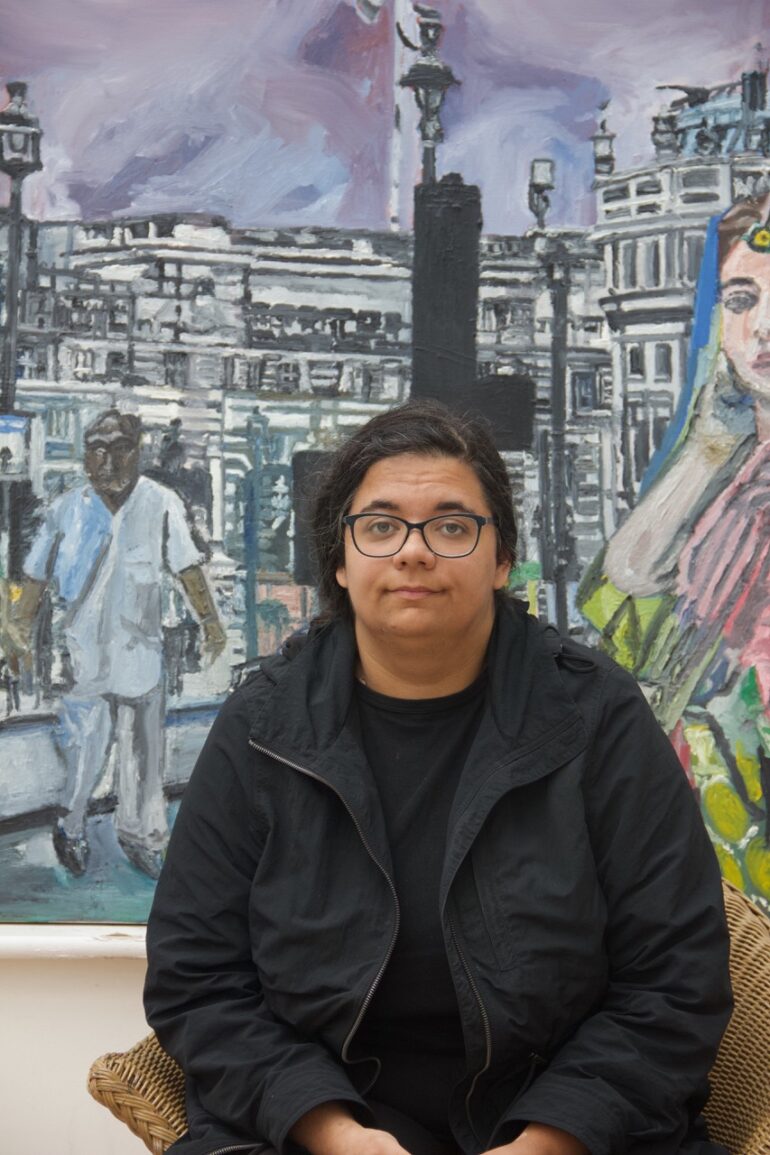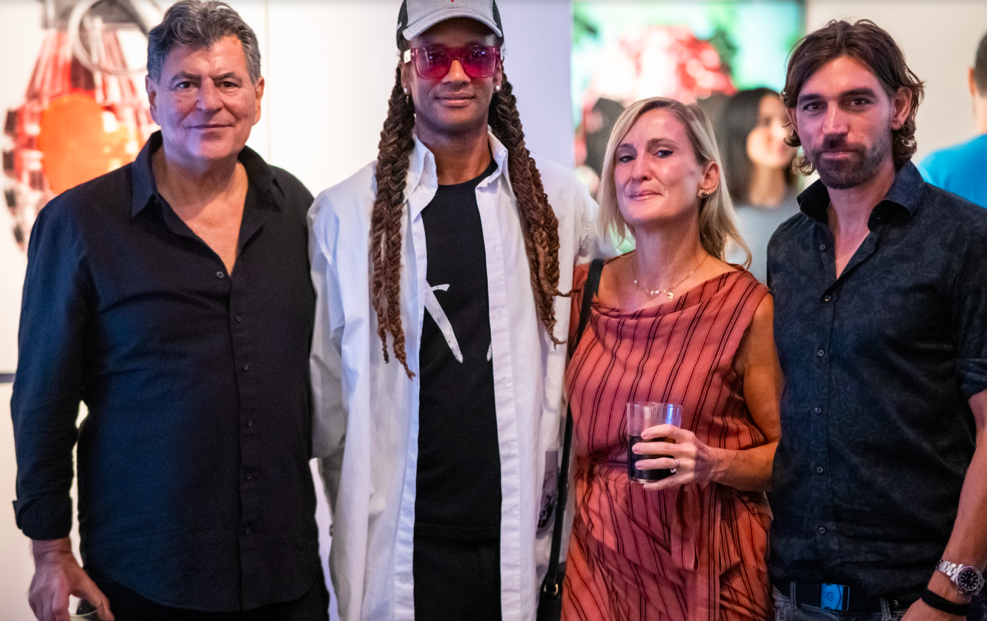As part of a series of interviews with the artists featured in Reflections – Sangat and the Self, Culturalee spoke to London-based Painter Jasmir Creed ahead of the exhibition’s opening at Without Shape Without Form’s new permanent gallery in Slough. Known for her psychologically charged figurative paintings, Creed’s work offers a bold and unflinching exploration of cultural alienation, particularly as experienced by British South Asian women navigating both urban landscapes and domestic interiors.
Through vivid colour palettes and a striking expressionistic style, Creed constructs layered oil paintings that blend the public and the personal. Anonymous crowds, iconic monuments like Trafalgar Square, and historical urban spaces converge with self-portraits and intimate interior scenes, revealing a world shaped by detachment, identity, and transcultural hybridity. In this conversation, Creed reflects on the emotional terrain of her work and how her own lived experience informs the quiet tension that pulses beneath each canvas.
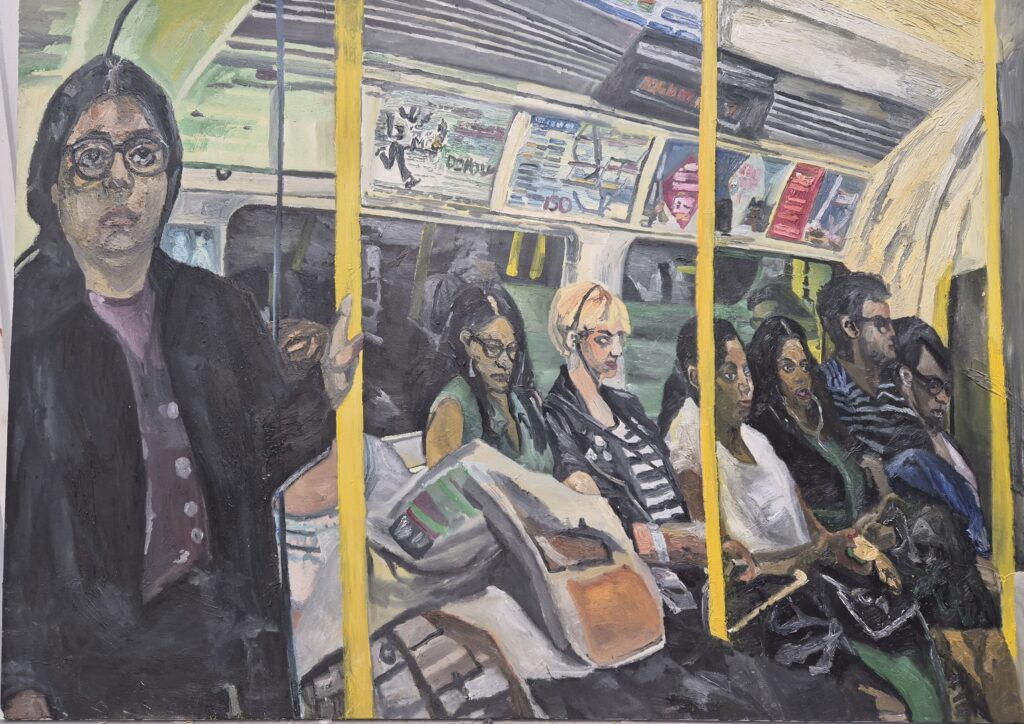
Will Reflections be the first time you’ve collaborated with WSWF founder Deep Kailey, and when did she approach you to take part in the exhibition?
I first met Deep in 2022 through curator, writer and publisher Matthew Price of Anomie and Hurtwood Publishing. She was very interested in my work and invited me to take part in Reflections at without SHAPE without FORM, alongside the artist Roo Dhissou.
Reflections brings together over 20 emotionally charged paintings exploring themes of cultural alienation, particularly for British South Asian women. How does your personal history shape the way you approach these themes on canvas?
My background is British South Asian, with family histories involving both Indian migrants and white British relatives who have lived in the UK for generations. Experiencing diverse customs and perspectives has given me a dual sense of identity and a constant negotiation of cultural hybridity.
This hybridity runs through my work. For example, I often depict South Asian women’s dress and textile designs in British environments, bringing together different cultural visual languages. My grandparents’ house exemplified this fusion: a Sikh prayer room containing the Granth Sahib within a Western-style home. I have also grown-up attending Sikh weddings and funerals in multicultural cities such as Manchester, London and Liverpool, all layered with colonial histories and public monuments that still shape our daily lives.
The relationship between transcultural experience and alienation is central to my paintings. It appears both in the imagery I create and in my painterly language, combining South Asian colour and pattern with the forms of British architecture and urban space.
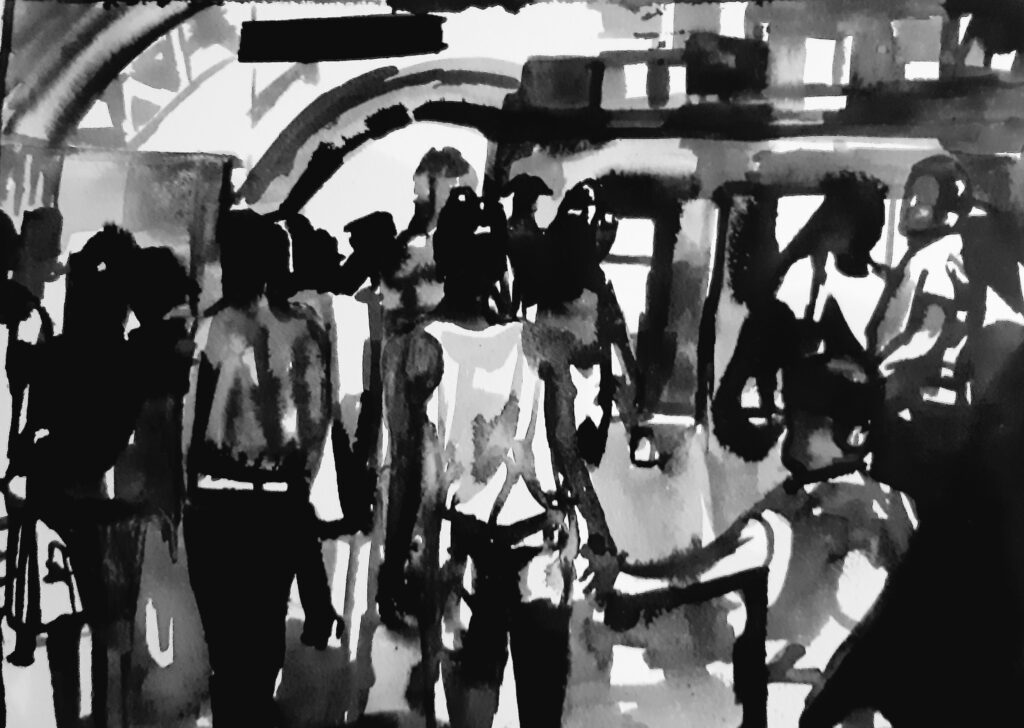
Your paintings often depict busy urban scenes, like the London Underground in Transience, yet they evoke a deep sense of isolation. What draws you to these environments as a way of expressing psychological and cultural disconnection?
I began closely observing my surroundings while studying at UAL Wimbledon College of Art (2010–15). Since then, I’ve been drawn to sites of political and social significance, from the Occupy London protest outside St Paul’s Cathedral in 2012 to the London Underground.
Places such as Trafalgar Square fascinate me for their contradictions: monuments to colonial power that are also gathering sites for protest. To me, they hold ghostlike memories of past events that linger in public consciousness.
In urban environments I often feel like a quiet observer, watching strangers on the tube, in the street, or passing by architecture. These crowds can seem depersonalised, people moving mechanically in transit. I feel apart, lost in thought, and channel this into my paintings of anonymous faces in flux. I invent fictional stories for these figures, displacing them into my own imagined urban compositions. I see my canvases as psycho-geographical terrains, mapping dislocated scenes with paint and ink as my tools.
You’ve cited artists like Frank Auerbach and Edvard Munch as influences in this exhibition. How do their approaches to emotion and gesture inform your own expressionistic style?
Frank Auerbach painted urban life around Camden with expressionistic intensity, distorting reality to convey feeling. Similarly, I use expressive mark-making—particularly with black ink, which absorbs into paper in a fluid, fleeting way suited to capturing people in transit. Like Auerbach, I am interested in the rhythms of everyday commuters and the transient nature of the city.
Edvard Munch’s work also resonates with me. His paintings convey alienation in modern life, often exploring dualities such as male and female, private and public. In works like Evening on Karl Johan Street (1892), he captures the collective solitude of crowds. I echo this in my painting Circus of Faces (2024), where a hypnotic crowd advances towards us, each face staring out yet locked in its own solitude.
Both artists influence my expressionist use of colour and form to explore the conflict between belonging and non-belonging in public space.
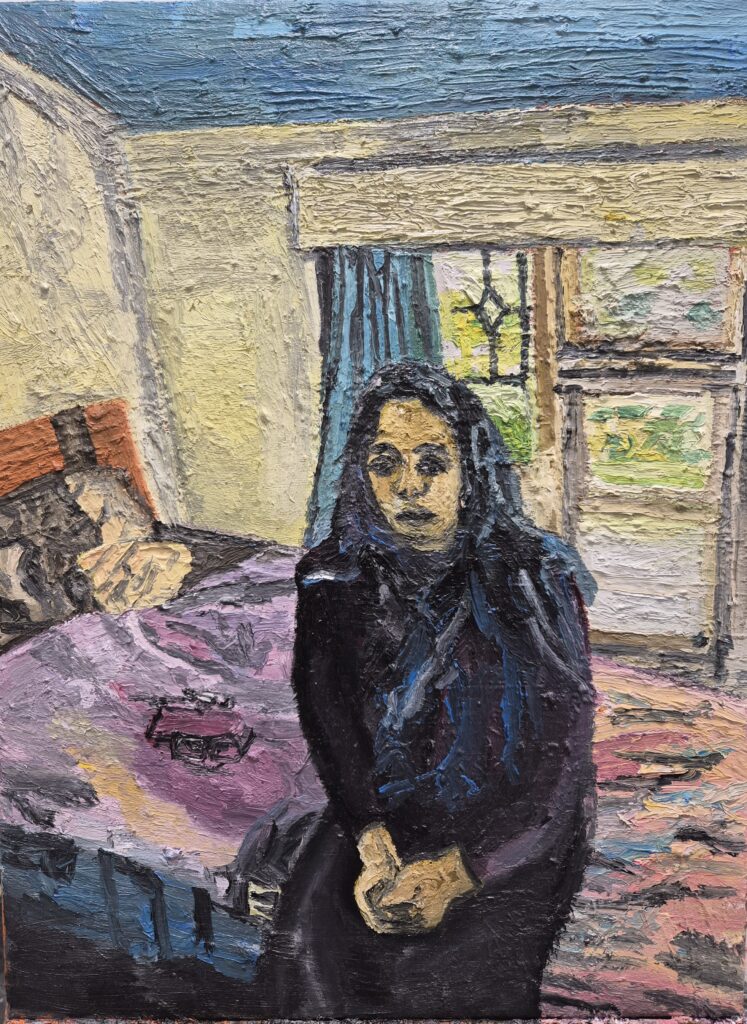
There’s a powerful interplay between anonymity and intimacy in your work, from crowded public spaces to quiet domestic interiors. How do you see this tension reflecting broader ideas of identity, hybridity and belonging?
My work explores alienation and transcultural experience through fragmented, layered compositions. As a British South Asian artist, I am drawn to how domestic interiors and urban public spaces reveal identity, isolation and hybridity. South Asian dress and textile motifs often appear in my work, contrasted with British architecture or monuments.
Alienation is not fixed but exists on a continuum with belonging. In multicultural British cities, whether someone feels alienated often depends on perspective: a familiar environment to one person may feel disorienting to another. For instance, a visitor unused to Delhi may feel alienated travelling on its metro, just as I have felt estranged in parts of the countryside in Britain.
By painting these tensions – between alienation and belonging, between anonymity and intimacy – I map out the complexities of cultural hybridity that define my own identity.
‘Reflections — Sangat and the Self’, featuring Jasmir Creed & Roo Dhissou runs from 19th September 2025 until 2nd May, 2026 at Without Shape Without Form HQ in Slough.


